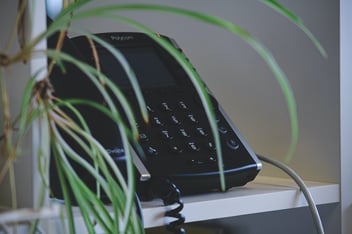EFaxing - Everything You Need to Know About the T.38 vs. HTTPS Debate
Faxing is not extinct, far from it. For over 60 years, faxing has grown from a small, niche, relatively obscure invention to an office mainstay worldwide in the 1980s and 90s. Many believe that because email and file sharing are the current office go-to, faxing is gone, but that is not the case. One uniqueness of faxing is that the first international standard was enacted in 1968. If you plug in a 40-year-old fax machine today due to the standards in place, you can still send and receive faxes from the physical machine and still use eFax services like VFaxing from Simplicity.
The Importance of Faxing in the Digital World
Due to the precise operational standards set, many businesses and sectors rely on faxing to conduct business. For example, if you go to the doctor and need to see a specialist, the doctor's office will need to send your medical file using a fax. You can't digitize the medical file and email it to another doctor; that isn't secure. Healthcare is responsible for 75 percent of all faxes; globally, nine billion were sent last year. Medical files can be large, and with an eFaxing solution from Simplicity, sending a fax that is 50 pages in length is as simple as sending one page.
What is EFaxing?
EFaxing, or eFax services, is the internet's inclusion into the world of using traditional phone lines to send and receive fax communication. The fact is that conventional analog copper lines have become deregulated by the FCC (FCC-19-72) in the US, but that is not the case internationally. Even with deregulation, most providers still support the lines until a viable, long-term solution can be enacted.
Major business sectors entirely rely on faxing to conduct day-to-day business:
- Real Estate: Many aspects of a transaction are faxed, including purchase agreements, lease agreements, inspection reports, title and loan documents, just to name a few.
- Healthcare: Mainly used to transmit patient records, referrals, prescriptions, and other clinical documentation, faxing is a must in the healthcare sector.
- Finance and Banking: Some banks and insurance companies send loan documents for physical signatures since they deem these legally binding.
- Government and Legal: Courts, Internal Revenue Service (IRS), and Social Security Administration (SSA) heavily rely on faxing for legal findings, tax forms, pleadings, motions, emergency motions, and orders.
At this point, the delay is mainly attributed to changing a process and updating what's acceptable for legal purposes. Still, lasting changes will occur once the copper lines are fully deregulated. EFaxing services are here to support your business.
EFaxing Protocols
Through the years, as with any technology, faxing has implemented various protocols as advancements have become available. Protocols are simply guidelines that instruct how fax machines communicate with each other. These guidelines specify how fax data should be formatted, transmitted, received, and interpreted during the fax process. The International Telecommunications Union (ITU), which the United Nations oversees, is an agency regulating information and communications technologies since 1865.
Overview of T.38
T.38 is a protocol designed to send faxes over an IP network. Traditionally, fax can't be converted into voice to send via Voice over Internet Protocol (VoIP), so a T.38 gateway is needed on the network to relay the message. T.38 is considered "real-time" faxing, meaning it sends a connection request to the recipient; once that connection request is given the green light, the fax sends the package directly to the recipient fax. It does not change hands along the way; nothing is sent if the initial acknowledgment is not received.
- "Real-time" fax
- T.38 still delivers over PSTN lines as one side is analog
- Susceptible to jitter and packet loss due to the file being sent "whole" and not sent in pieces like HTTPS
Overview of HTTPS
Using eFax services over HTTPS fully takes advantage of our modern network. It's less intensive on the network since it gets broken down and delivered like all other information, including VoIP calls. This means you can send a fax and deliver it to an email address, fax machine, or document storage.
- Delivers fully through the internet
- Multiple delivery options
- Not susceptible to jitter or packet loss
Heads Up Battle: T.38 vs. HTTPS
T.38 may have been the first in the eFaxing world; HTTPS is the superior technology. T.38 relies on a PSTN line to function, and with potential jitter and packet loss issues, it shouldn't be a long-term solution. HTTPS is easy to use, convenient, and can handle much larger transmission files, like medical records. Simplicity Toll Free VFax is the best choice for eFaxing.

VFaxing from Simplicity is the Dominant Solution That You Need
The need to send and receive faxes is genuine. Kings Research estimates that by 2030, the faxing market will be worth US $12.32 billion, a drastic increase from the 2022 market value of US $4.7 billion. Don't be left scrambling to fulfill your faxing needs; talk with Simplicity VoIP about your eFaxing services and entire business communication needs. Contact us today for a system evaluation and a free quote.




